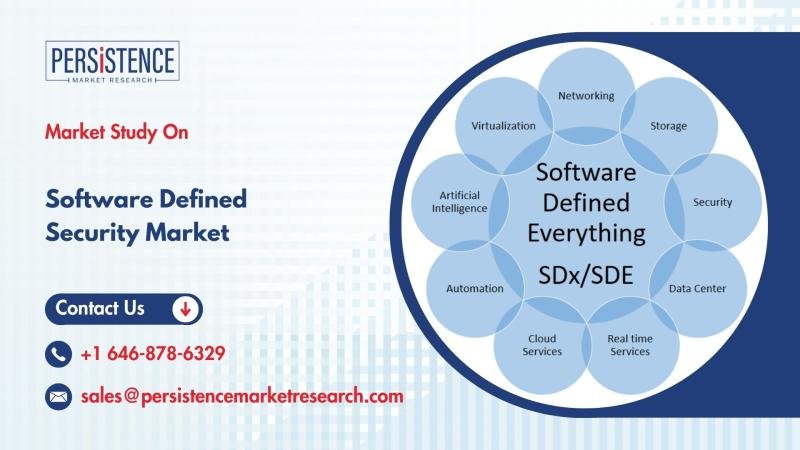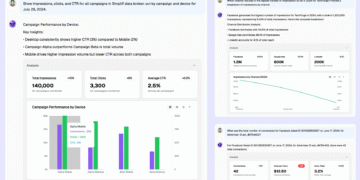Introduction
The software defined security (SDS) market is experiencing rapid growth, fueled by increasing demand for scalable, flexible, and automated security solutions. As organizations transition to cloud-based environments and hybrid IT infrastructures, traditional security models are proving insufficient to handle evolving cyber threats. Software defined security enables businesses to dynamically manage security policies, automate threat detection, and enhance data protection across networks. This report provides an in-depth analysis of the SDS market, highlighting key drivers, challenges, market trends, technological advancements, and regional insights.
Software defined security solutions help enterprises monitor and enforce security controls in real time by leveraging virtualization, automation, and artificial intelligence (AI). These solutions eliminate hardware dependency and provide centralized security management, improving efficiency and reducing operational costs.
With rising cyber threats and regulatory compliance requirements, organizations are increasingly investing in SDS solutions to protect critical data assets. The market’s expansion is also driven by the growing adoption of cloud computing, IoT devices, and remote work environments, all of which demand robust and adaptable security frameworks.
Get a Sample PDF Brochure of the Report (Use Corporate Email ID for a Quick Response): http://www.persistencemarketresearch.com/samples/13201
Market Projections and Forecast
According to Persistence Market Research’s analysis, the global software defined security market is set for significant growth in the coming years. The market, valued at US$ 13.25 billion in 2024, is projected to reach US$ 69.46 billion by 2031, registering an impressive compound annual growth rate (CAGR) of 26.70% between 2024 and 2031.
The increasing adoption of cloud computing and AI-powered cybersecurity solutions is expected to drive market expansion. North America is anticipated to witness strong growth, propelled by extensive enterprise adoption of SDS solutions and stringent regulatory frameworks enforcing cybersecurity measures.
Market Dynamics
Drivers of Market Growth
Rising Cybersecurity Threats: The growing frequency and complexity of cyberattacks have made traditional security solutions inadequate. Software defined security enables enterprises to implement agile and adaptive security frameworks, improving response times to threats.
Adoption of Cloud Computing: As businesses migrate to cloud-based infrastructures, there is an increasing need for security solutions that can dynamically scale and secure cloud workloads.
Regulatory Compliance and Data Privacy Laws: Stricter government regulations and compliance requirements are compelling organizations to invest in advanced security solutions like SDS to meet industry standards and protect sensitive data.
Increased Deployment of IoT and Edge Computing: With the proliferation of IoT devices and edge computing, enterprises require flexible security solutions to protect expanding attack surfaces.
Challenges in the Market
Complexity of Deployment: While SDS solutions offer significant benefits, their implementation requires skilled IT professionals and a robust IT infrastructure, which can be challenging for smaller organizations.
High Initial Investment Costs: The transition from traditional security solutions to software defined security involves substantial initial investment, which may deter some organizations from adoption.
Integration Issues with Legacy Systems: Many enterprises still operate on legacy security infrastructure, making seamless integration with SDS solutions a complex and costly process.
Market Trends and Technological Innovations
Integration of Artificial Intelligence and Machine LearningAI and machine learning are transforming the SDS landscape by enabling predictive threat detection and automated response mechanisms. AI-driven security analytics help organizations identify and mitigate risks proactively.
Expansion of Zero Trust Security FrameworksThe rise of remote work and hybrid IT environments has accelerated the adoption of zero trust security models, where continuous authentication and access verification are prioritized.
Growing Demand for Managed Security ServicesAs enterprises struggle with security expertise shortages, managed security service providers (MSSPs) are playing a crucial role in offering SDS solutions as part of their cybersecurity services.
Software Defined Security Market Segmentation
By Component:
Software
Services
By Deployment Mode:
On-Premise
Cloud-Based
By Organization Size:
Small & Medium Enterprises (SMEs)
Large Enterprises
By End-Use Industry:
BFSI
IT & Telecom
Healthcare
Government
Retail
Others
Regional Analysis
North AmericaNorth America dominates the SDS market, driven by the high adoption of cloud-based security solutions, stringent cybersecurity regulations, and a robust enterprise security landscape. The U.S. leads the region in SDS implementation, with major tech firms investing heavily in AI-driven security innovations.
EuropeEurope is witnessing steady growth in SDS adoption, fueled by GDPR compliance requirements and increasing concerns over cyberattacks targeting financial and healthcare sectors. Countries like the UK, Germany, and France are at the forefront of implementing SDS solutions.
Asia-PacificThe Asia-Pacific region is experiencing rapid expansion, with growing investments in cloud infrastructure and cybersecurity. Emerging economies like China, India, and Japan are driving SDS adoption across various industries, including BFSI, IT, and government sectors.
Key Companies Profiled in the Report
Palo Alto Networks
Fortinet
VMware
Check Point Software Technologies
McAfee
Cisco Systems
Trend Micro
IBM Corporation
Symantec Corporation
Juniper Networks
Future Outlook
The software defined security market is poised for substantial growth, driven by rapid technological advancements and increasing awareness of cybersecurity risks. Organizations are expected to invest more in AI-powered security solutions, cloud-based security architectures, and zero trust frameworks.
The integration of SDS with next-generation technologies, such as 5G, blockchain, and IoT security, will further expand its application scope. Additionally, partnerships between cybersecurity firms and cloud service providers are expected to drive innovation and create new revenue streams in the SDS market.
Conclusion
The software defined security market is undergoing a transformative phase, with enterprises shifting towards automated, scalable, and AI-driven security solutions. While challenges such as high initial investment costs and integration complexities persist, the benefits of SDS in enhancing cybersecurity resilience outweigh these concerns.
As cyber threats continue to evolve, organizations must embrace software defined security to stay ahead of potential risks. The market’s projected growth to US$ 69.46 billion by 2031 highlights its increasing relevance in the global cybersecurity landscape. With continued advancements in AI, cloud computing, and zero trust security, SDS solutions will remain at the forefront of the digital security revolution.
Explore the Latest Trending “Exclusive Article” @
• https://prnewssync.medium.com/growth-trends-shaping-the-mixed-reality-market-919d9b66d291
• https://techxpresstoday.wordpress.com/2025/02/11/mixed-reality-market-emerging-technologies-and-innovations/
• https://apsnewsmedia.blogspot.com/2025/02/mixed-reality-market-investment.html
• https://www.manchesterprofessionals.co.uk/article/information-technology/82367/mixed-reality-market-size-analysis-and-industry-forecast
• https://vocal.media/stories/mixed-reality-market-adoption-in-healthcare-and-education
Contact Us:
Persistence Market Research
G04 Golden Mile House, Clayponds Lane
Brentford, London, TW8 0GU UK
USA Phone: +1 646-878-6329
UK Phone: +44 203-837-5656
Email: sales@persistencemarketresearch.com
Web: https://www.persistencemarketresearch.com
About Persistence Market Research:
At Persistence Market Research, we specialize in creating research studies that serve as strategic tools for driving business growth. Established as a proprietary firm in 2012, we have evolved into a registered company in England and Wales in 2023 under the name Persistence Research & Consultancy Services Ltd. With a solid foundation, we have completed over 3600 custom and syndicate market research projects, and delivered more than 2700 projects for other leading market research companies’ clients.
Our approach combines traditional market research methods with modern tools to offer comprehensive research solutions. With a decade of experience, we pride ourselves on deriving actionable insights from data to help businesses stay ahead of the competition. Our client base spans multinational corporations, leading consulting firms, investment funds, and government departments. A significant portion of our sales comes from repeat clients, a testament to the value and trust we’ve built over the years.
This release was published on openPR.

















